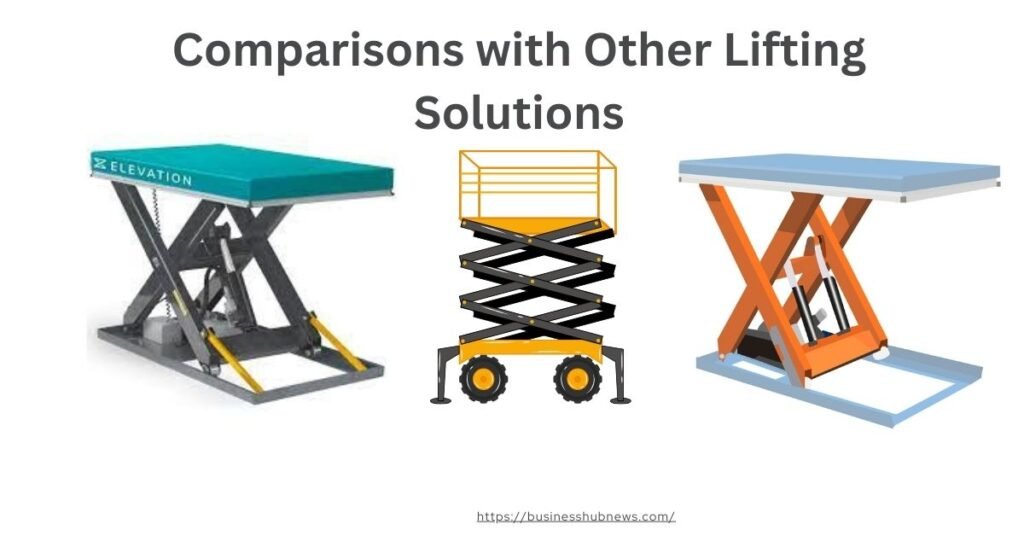In the dynamic landscape of various industries, the world of hydraulic lift tables has emerged as indispensable tools for material handling and elevation. This article delves into the intricacies of manual mastery in navigating the world of hydraulic lift tables, exploring their functions, advantages, and applications across diverse sectors.
Understanding Hydraulic Lift Tables
Basic Components and Functionality
Hydraulic lift tables consist of a hydraulic cylinder, a pump, and a piston. When pumped into the cylinder, the hydraulic fluid pushes the piston upward, raising the platform. Grasping the fundamental components is essential for comprehending their operational principles.
Varied Applications Across Industries
From warehouses to manufacturing plants, hydraulic lift tables find applications in diverse settings. Their ability to lift heavy loads with precision makes them integral in processes involving material handling, assembly, and maintenance.
Advantages of Manual Hydraulic Lift Tables
Precision and Control in Operations
Manual lift tables give operators precise control over the lifting and lowering. This level of control is crucial, especially when handling delicate materials or positioning loads in tight spaces.
Cost-Effectiveness and Maintenance Benefits
Manual hydraulic lift tables are often more cost-effective than their automated counterparts. Their more straightforward design contributes to easier maintenance, reducing overall operational costs.
Types of Hydraulic Lift Tables

Scissor Lift Tables
Scissor lift tables use a crossed scissor mechanism to elevate loads vertically. They are versatile and commonly used for applications requiring a stable lifting platform.
Dock Lift Tables
Dock lift tables are specifically designed for loading and unloading goods from trucks at dock-level heights. They enhance efficiency in logistics and warehouse operations.
Hydraulic Work Tables
Hydraulic work tables provide a stable platform for various tasks, such as assembly, maintenance, and inspection. Their adjustable height feature adds flexibility to workspace configurations.
Choosing the Right Hydraulic Lift Table
Assessing Load Capacity
Understanding the weight of the loads to be lifted is paramount. Selecting a hydraulic lift table with an appropriate load capacity ensures safe and efficient operations.
Considering Vertical Travel Requirements
Different applications demand varying vertical travel capabilities. Choosing a lift table with the proper range is essential to meet specific operational needs.
Factoring in Safety Features
Safety is a top priority when operating hydraulic lift tables. Look for features such as safety rails, emergency stop buttons, and overload protection mechanisms.
Operating Manual Hydraulic Lift Tables
Step-by-Step Guide to Safe and Efficient Use
Operating manual lift tables requires a systematic approach. This section provides a step-by-step guide emphasizing safety protocols and efficient handling.
Common Challenges and How to Overcome Them
Despite their reliability, hydraulic lift tables may face challenges. Understanding common issues and implementing proactive measures ensures smooth and uninterrupted operations.
Case Studies
Real-World Examples of Successful Hydraulic Lift Table Implementations
Explore real-life instances where businesses have successfully integrated manual hydraulic lift tables into their processes, showcasing the versatility and positive impact on efficiency.
Industry-Specific Applications
Automotive
In the automotive industry, hydraulic lift tables facilitate maintenance and repair, providing mechanics easy access to the undercarriage.
Manufacturing
Manufacturing processes often involve the handling of heavy materials. Hydraulic lift tables streamline production by enabling precise positioning and assembly.
Warehousing and Logistics
Efficient material handling is crucial in warehousing and logistics. Hydraulic lift tables play a pivotal role in optimizing storage and retrieval operations.
Trends in Hydraulic Lift Table Technology
Automation Integration
The integration of automation technologies enhances the efficiency of hydraulic lift tables. Explore how automation is shaping the future of material handling.
IoT Connectivity
The Internet of Things (IoT) is revolutionizing industrial equipment. Learn how hydraulic lift tables are becoming interconnected for improved monitoring and maintenance.
Environmental Considerations
Energy Efficiency
As sustainability gains prominence, hydraulic lift table manufacturers are focusing on energy-efficient designs. Discover how these tables contribute to greener operations.
Eco-Friendly Hydraulic Fluids
The choice of hydraulic fluid has environmental implications. Learn about eco-friendly options that reduce the environmental impact of hydraulic lift table operations.
Maintenance Tips for Longevity
Regular Inspections
Routine inspections are crucial for identifying potential issues before they escalate. This section provides a checklist for regular maintenance.
Lubrication Practices
Proper lubrication is critical to the longevity of hydraulic lift tables. Understand the best practices for lubricating components to ensure smooth operation.
Comparisons with Other Lifting Solutions

Hydraulic Lift Tables vs. Conventional Lifts
Explore the differences between hydraulic lift tables and conventional lifts, highlighting the advantages that make hydraulic tables a preferred choice.
Hydraulic Lift Tables vs. Pneumatic Lifts
Understand the distinctions between hydraulic and pneumatic lift tables, considering load capacity, precision, and operational efficiency.
Future Prospects and Innovations
Emerging Technologies in Hydraulic Lift Tables
Stay informed about the latest technological advancements shaping the future of hydraulic lift tables in various industries.
Expert Insights and Recommendations
Advice from Industry Professionals
Gain valuable insights from experts in the field, offering recommendations on choosing, operating, and maintaining hydraulic lift tables.
Conclusion
In conclusion, mastering the manual operation of hydraulic lift tables is essential for unlocking their full potential. The ability to navigate the intricacies of these versatile tools empowers industries to elevate efficiency, streamline operations, and ensure workplace safety.
FAQs
Q1: Can hydraulic lift tables handle hefty loads?
Yes, hydraulic lift tables are designed to handle various loads, including heavy and bulky items.
Q2: Is manual operation more cost-effective than automated systems?
Manual hydraulic lift tables are often more cost-effective, making them a preferred choice for businesses seeking efficiency without extensive automation costs.
Q3: Are there specific safety precautions for operating hydraulic lift tables?
Absolutely. Operators should adhere to safety guidelines, including proper load distribution, regular inspections, and emergency protocols.
Q4: Can hydraulic lift tables be customized for specific industry needs?
Many manufacturers offer customization options to tailor hydraulic lift tables to specific industry requirements.
Q5: Why is the custom message at the end of the article important?
The custom message provides a direct link for readers to explore and purchase curated hydraulic lift tables.


